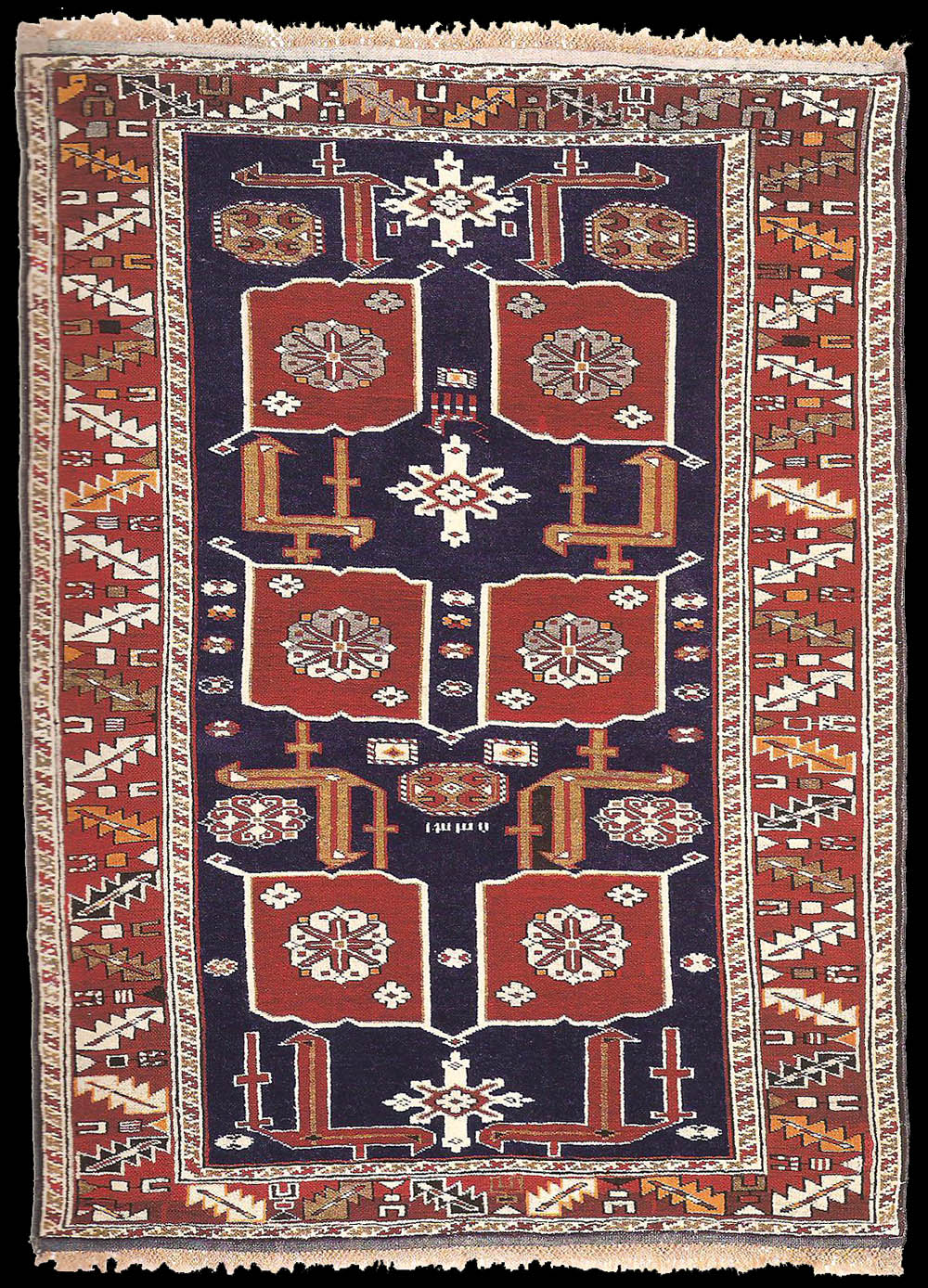|
1337 AH / 1918 AD
dated antique Kuba Karagashli rug, Lowland Kuba Region, Chay
Karagashli village, Devechi (Divichi)
District, North East
Azerbaijan, 118 x 85 cm
|
|
Te alternating rows
of fork-vines (islimi) and large plane-palmettes on a midnight-blue
ground form a pattern characteristic of this group, L. Kerimov reports that
the weavers of these carpets call the islimi "kusbashi" (bird head).
Between the islimi, white cross-palmettes appear. In the second row, an
octagon with four C or crescent motifs is included instead of a
cross-palmette. Two other medallions of this type are positioned at the
bottom. The varying structure of the rosettes that appear in the palmettes
are of particular interest as compared to the two that can be seen after the
first pair of palmettes, They have a much more complex design. If these were
not included, one would be inclined to conclude that the weaver design ed
the less complex form later because she either neglected or forgot it or she
did not understand it. The main border on a red ground shows the wine glass
pattern. L. Kerimov reports that it is called shamdan (candleabra) or
mashaal (torch) border. Two small, white-ground minor borders flank
the main border.
Warp: Wool, Z 3 S,
ivory
Weft: Wool + Cotton,
Z 2, ivory + white (whether a thread is occasionally from silk could not be
established in spite of a fire test), 2 wefts: 1st tight, 2nd waved.
Pile: Wool, Z 2,
pale blue, but also pale green, occasionally Z 3-4
Pile Height: 2 mm
Knots: Symmetrical
3, \, 40 °, Horizontal: 70, Vertical 35 = c. 2450 knots / per square
decimeter
Upper end: c. 1 cm
blue cotton simple tapestry weave, 2 cm groups of warp-threads knotted in
staggered rows.
Lower end: like
upper end.
Selvedge: 0.5 cm
light blue cotton shirazi in figure of eight wrapping around 2 ribs with
supplemental threads.
Literature: L Kerimov II, ill. 134. p. 161: Richard E. Wright, Rugs and
Flatweaves of the Transcaucasus, Pittsburg 1980, plate 42. Ulrich Shurmann
discussed and pictured one of the most beautiful pieces of this group, loc.
cit., plate 285, color plate 108.
published at
Siyawouch Azadi "Azerbaijani
Caucasian rugs"
 |

